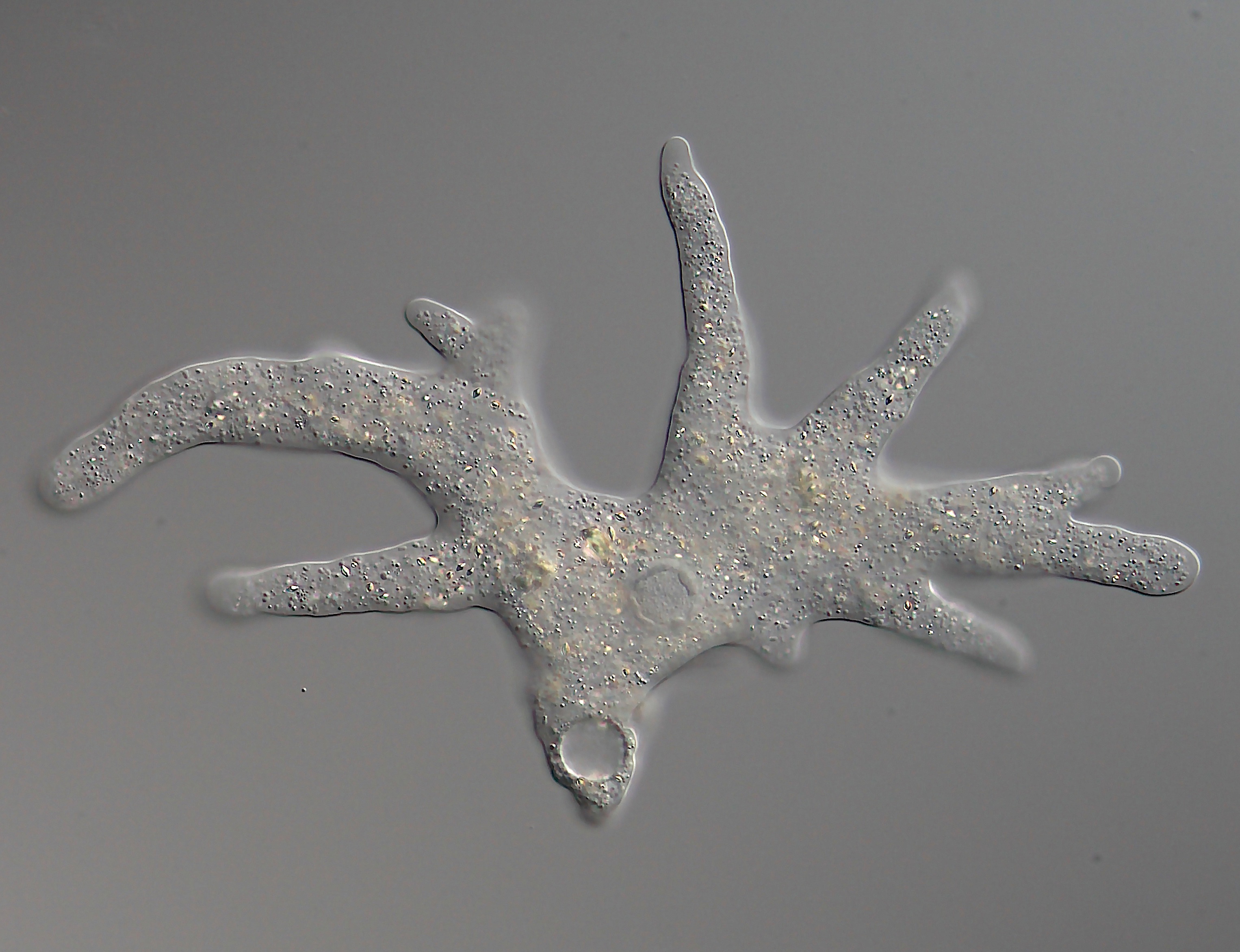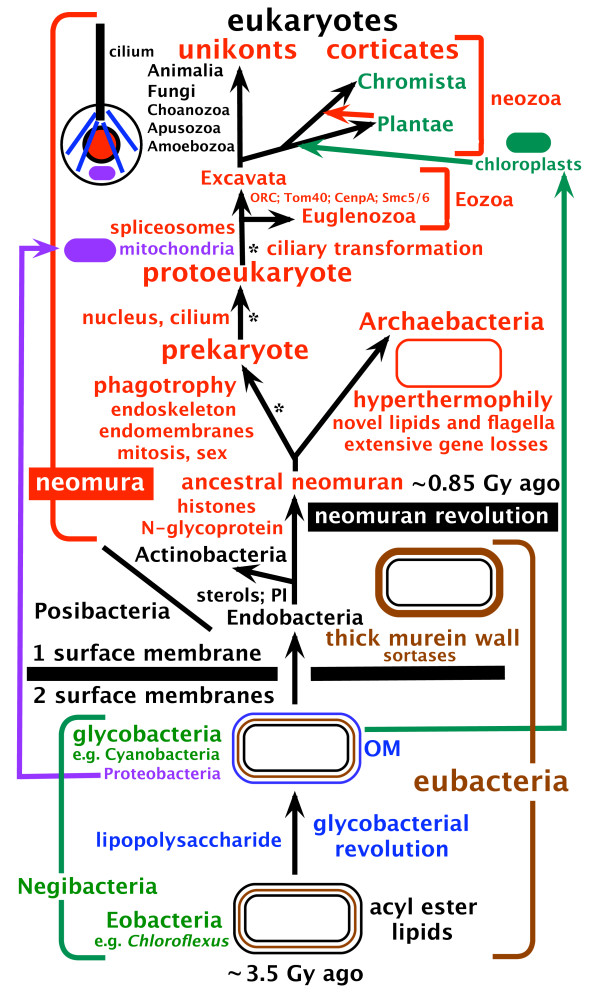|
Massisteria
''Massisteria'' is a genus of Cercozoa. They are naked protists with a central cell body from which several delicately thin and stiff pseudopodia extend, each one bearing a small number of granules. Their pseudopodia remain adhered to the substrate, as is typical among leucodictyids. The cell body has two flagella A flagellum (; : flagella) (Latin for 'whip' or 'scourge') is a hair-like appendage that protrudes from certain plant and animal sperm cells, from fungal spores ( zoospores), and from a wide range of microorganisms to provide motility. Many pr ... that, during feeding, are held in place. Taxonomy The genus has two described species: *'' Massisteria marina'' *'' Massisteria voersi'' References Granofilosea Rhizaria genera {{Cercozoa-stub ... [...More Info...] [...Related Items...] OR: [Wikipedia] [Google] [Baidu] |
Massisteria Marina
''Massisteria marina'' is a species of small marine phagotrophic protists that normally feed on bacteria. Individuals live associated with sediment particles and suspended detritus in litoral or marine waters. It is found at marine sites all around the world. Its predominantly sedentary lifestyle was a discovery that challenged the concept of bacterivorous protists as constantly active hunters, and its permanent association with detritus particles is uncommon among flagellates. Morphology ''Massisteria marina'' are unicellular amoeboflagellates composed of a flattened irregular star-shaped cell body measuring 3–9 μm in diameter, pressed against the substrate, with several (2 to 10) thin branching filamentous pseudopodia, extrusomes close to the substrate, and two short inactive flagella that measure 4–6 μm. The arrangement of their pseudopodia are reminiscent of freshwater species '' Gymnophrys cometa'', which usually has only two pseudopodial trunks but more can arise. ... [...More Info...] [...Related Items...] OR: [Wikipedia] [Google] [Baidu] |
Massisteria Voersi
''Massisteria'' is a genus of Cercozoa. They are naked protists with a central cell body from which several delicately thin and stiff pseudopodia extend, each one bearing a small number of granules. Their pseudopodia remain adhered to the substrate, as is typical among leucodictyids. The cell body has two flagella that, during feeding, are held in place. Taxonomy The genus has two described species: *''Massisteria marina ''Massisteria marina'' is a species of small marine phagotrophic protists that normally feed on bacteria. Individuals live associated with sediment particles and suspended detritus in litoral or marine waters. It is found at marine sites all ar ...'' *'' Massisteria voersi'' References Granofilosea Rhizaria genera {{Cercozoa-stub ... [...More Info...] [...Related Items...] OR: [Wikipedia] [Google] [Baidu] |
Leucodictyid
Leucodictyids are heterotrophic amoeboid protists that comprise the order Leucodictyida in the phylum Cercozoa. Morphology Leucodictyids are biciliate amoebae with branching filopodia that are capable of fusing temporarily with each other to form structures known as meroplasmodia. These filopodia can bear extrusomes, and are appressed to the substrate while supported in part by irregularly arranged microtubules. Inside the cell itself, an important characteristic is the presence of tubular mitochondrial cristae. Taxonomy Leucodictyida was described in 1993 as a monotypic order containing only the family Leucodictyidae. Later, in 2003, it was emended to also contain the family Massisteriidae. It currently contains a total of 4 genera. *Family Leucodictyidae **'' Leucodictyon'' **'' Reticulamoeba'' *Family Massisteriidae **''Massisteria ''Massisteria'' is a genus of Cercozoa. They are naked protists with a central cell body from which several delicately thin and stiff p ... [...More Info...] [...Related Items...] OR: [Wikipedia] [Google] [Baidu] |
Granofilosea
Granofilosea is a class (biology), class of cercozoan protists in the subphylum Reticulofilosa. Out of the three groups that were traditionally considered heliozoans: the heliomonadida, heliomonads, gymnosphaerida, gymnosphaerids and desmothoracida, desmothoracids, the latter were recently grouped into this new class. Phylogeny and taxonomy Phylogeny The following cladogram shows the results of a 2011 phylogenetic analysis: Taxonomy * Class Granofilosea Cavalier-Smith & Bass 2009 ** Family ?Microgromiidae De Saedeleer 1934 *** Genus ''Apogromia'' de Saedeleer 1934 *** Genus ''Belaria'' de Saedeleer 1934 *** Genus ''Heterogromia'' de Saedeleer 1934 *** Genus ''Microgromia'' Hertwig & Lesser 1874 *** Genus ''Paralieberkuehnia'' de Saedeleer 1934 ** Order ?Axomonadida [Exonucleoaxoplastiales] *** Family Tetradimorphidae Febvre-Chevalier & Febvre 1984 **** Genus ''Tetradimorpha'' Hsiung 1927 ** Order Desmothoracida Honigberg et al. 1964 [Cryptaxohelida; Desmothoraca Hertwig & Lesser 1 ... [...More Info...] [...Related Items...] OR: [Wikipedia] [Google] [Baidu] |
Cercozoa
Cercozoa (now synonymised with Filosa) is a phylum of diverse single-celled eukaryotes. They lack shared morphological characteristics at the microscopic level, and are instead united by phylogeny, molecular phylogenies of rRNA and actin or Ubiquitin#Polyubiquitin chains, polyubiquitin. They were the first major eukaryotic group to be recognized mainly through phylogeny, molecular phylogenies. They are the natural predators of many species of bacteria. They are closely related to the phylum Retaria, comprising amoeboids that usually have complex shells, and together form a supergroup called Rhizaria. Characteristics The group includes most amoeboids and flagellates that feed by means of filose pseudopods. These may be restricted to part of the cell surface, but there is never a true cytostome or mouth as found in many other protozoa. They show a variety of forms and have proven difficult to define in terms of structural characteristics, although their unity is strongly supported b ... [...More Info...] [...Related Items...] OR: [Wikipedia] [Google] [Baidu] |
Protist
A protist ( ) or protoctist is any eukaryotic organism that is not an animal, land plant, or fungus. Protists do not form a natural group, or clade, but are a paraphyletic grouping of all descendants of the last eukaryotic common ancestor excluding land plants, animals, and fungi. Protists were historically regarded as a separate taxonomic kingdom known as Protista or Protoctista. With the advent of phylogenetic analysis and electron microscopy studies, the use of Protista as a formal taxon was gradually abandoned. In modern classifications, protists are spread across several eukaryotic clades called supergroups, such as Archaeplastida ( photoautotrophs that includes land plants), SAR, Obazoa (which includes fungi and animals), Amoebozoa and " Excavata". Protists represent an extremely large genetic and ecological diversity in all environments, including extreme habitats. Their diversity, larger than for all other eukaryotes, has only been discovered in rece ... [...More Info...] [...Related Items...] OR: [Wikipedia] [Google] [Baidu] |
Cell Body
In cellular neuroscience, the soma (: somata or somas; ), neurocyton, or cell body is the bulbous, non-process portion of a neuron or other brain cell type, containing the cell nucleus. Although it is often used to refer to neurons, it can also refer to other cell types as well, including astrocytes, oligodendrocytes, and microglia. The part of the soma without the nucleus is called perikaryon (: perikarya). There are many different specialized types of neurons, and their sizes vary from as small as about 5 micrometres to over 10 millimetres for some of the smallest and largest neurons of invertebrates, respectively. The soma of a neuron (i.e., the main part of the neuron in which the dendrites branch off of) contains many organelles, including granules called Nissl granules, which are composed largely of rough endoplasmic reticulum and free polyribosomes. The cell nucleus is a key feature of the soma. The nucleus is the source of most of the RNA that is produced in neuron ... [...More Info...] [...Related Items...] OR: [Wikipedia] [Google] [Baidu] |
Pseudopodia
A pseudopod or pseudopodium (: pseudopods or pseudopodia) is a temporary arm-like projection of a eukaryotic cell membrane that is emerged in the direction of movement. Filled with cytoplasm, pseudopodia primarily consist of actin filaments and may also contain microtubules and intermediate filaments. Pseudopods are used for motility and ingestion. They are often found in amoebas. Different types of pseudopodia can be classified by their distinct appearances. Lamellipodia are broad and thin. Filopodia are slender, thread-like, and are supported largely by microfilaments. Lobopodia are bulbous and amoebic. Reticulopodia are complex structures bearing individual pseudopodia which form irregular nets. Axopodia are the phagocytosis type with long, thin pseudopods supported by complex microtubule arrays enveloped with cytoplasm; they respond rapidly to physical contact. Generally, several pseudopodia arise from the surface of the body, (''polypodial'', for example, '' Amoeba ... [...More Info...] [...Related Items...] OR: [Wikipedia] [Google] [Baidu] |
Granule (cell Biology)
In cell biology, a granule is a small particle barely visible by light microscopy. The term is most often used to describe a secretory vesicle containing important components of cell physiology. Examples of granules include granulocytes, platelet granules, insulin granules, germane granules, starch granules, and stress granules. It is considered as a cell organelle. Types There are mainly 2 types of granules based on presence or absence of membrane: # Membrane bound granules. # Non Membrane bound granules. Eosinophilic Granules, Basophilic Granules, Secretory Granules are examples of Membrane bound granules. P-granules, Stress granules are examples for Non Membrane bound granules. In leukocytes A group of leukocytes, called granulocytes, are white blood cells containing enzyme granules that play a significant role in the immune system. Granulocytes include neutrophils, eosinophils, and basophils which attack bacteria or parasites, and respond to allergens. Each type of ... [...More Info...] [...Related Items...] OR: [Wikipedia] [Google] [Baidu] |
Flagella
A flagellum (; : flagella) (Latin for 'whip' or 'scourge') is a hair-like appendage that protrudes from certain plant and animal sperm cells, from fungal spores ( zoospores), and from a wide range of microorganisms to provide motility. Many protists with flagella are known as flagellates. A microorganism may have from one to many flagella. A gram-negative bacterium '' Helicobacter pylori'', for example, uses its flagella to propel itself through the stomach to reach the mucous lining where it may colonise the epithelium and potentially cause gastritis, and ulcers – a risk factor for stomach cancer. In some swarming bacteria, the flagellum can also function as a sensory organelle, being sensitive to wetness outside the cell. Across the three domains of Bacteria, Archaea, and Eukaryota, the flagellum has a different structure, protein composition, and mechanism of propulsion but shares the same function of providing motility. The Latin word means " whip" to describe its ... [...More Info...] [...Related Items...] OR: [Wikipedia] [Google] [Baidu] |
Tom Cavalier-Smith
Thomas (Tom) Cavalier-Smith, FRS, FRSC, NERC Professorial Fellow (21 October 1942 – 19 March 2021), was a professor of evolutionary biology in the Department of Zoology, at the University of Oxford. His research has led to discovery of a number of unicellular organisms (protists) and advocated for a variety of major taxonomic groups, such as the Chromista, Chromalveolata, Opisthokonta, Rhizaria, and Excavata. He was known for his systems of classification of all organisms. Life and career Cavalier-Smith was born on 21 October 1942 in London. His parents were Mary Maude (née Bratt) and Alan Hailes Spencer Cavalier Smith. He was educated at Norwich School, Gonville and Caius College, Cambridge (MA) in Biology and King's College London (PhD) in Zoology. He was under the supervision of Sir John Randall for his PhD thesis between 1964 and 1967; his thesis was entitled "''Organelle Development in'' Chlamydomonas reinhardii". From 1967 to 1969, Cavalier-Smith w ... [...More Info...] [...Related Items...] OR: [Wikipedia] [Google] [Baidu] |
Protist (journal)
''Protist'' is a peer-reviewed scientific journal focusing on protists. It was founded as ''Archiv für Protistenkunde'' by editor Fritz Schaudinn in 1902, and originally published by Gustav Fischer and later Jena. The journal is now published by Elsevier, and is currently edited by Michael Melkonian (Botanical Institute, University of Cologne). The journal changed its name to ''Protist'' in 1998. Abstracting and indexing The journal is abstracted and indexed in the following bibliographic databases: According to the ''Journal Citation Reports'', the journal has a 2017 impact factor The impact factor (IF) or journal impact factor (JIF) of an academic journal is a type of journal ranking. Journals with higher impact factor values are considered more prestigious or important within their field. The Impact Factor of a journa ... of 2.702. References Further reading * * External links *{{Official, https://www.elsevier.com/journals/protist Publications established in 1902 ... [...More Info...] [...Related Items...] OR: [Wikipedia] [Google] [Baidu] |




